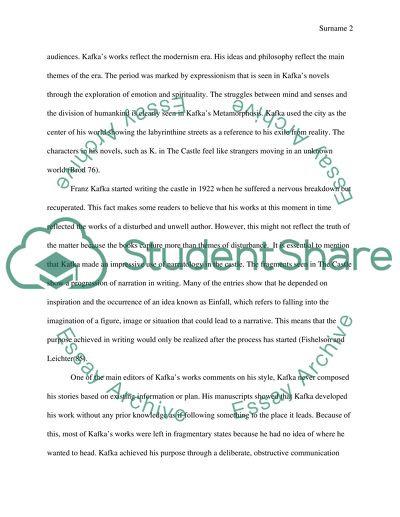Cite this document
(“The Castle by Franz Kafka Essay Example | Topics and Well Written Essays - 1250 words”, n.d.)
Retrieved from https://studentshare.org/literature/1436422-analyze-the-castle-by-franz-kafka-in-terms-of
Retrieved from https://studentshare.org/literature/1436422-analyze-the-castle-by-franz-kafka-in-terms-of
(The Castle by Franz Kafka Essay Example | Topics and Well Written Essays - 1250 Words)
https://studentshare.org/literature/1436422-analyze-the-castle-by-franz-kafka-in-terms-of.
https://studentshare.org/literature/1436422-analyze-the-castle-by-franz-kafka-in-terms-of.
“The Castle by Franz Kafka Essay Example | Topics and Well Written Essays - 1250 Words”, n.d. https://studentshare.org/literature/1436422-analyze-the-castle-by-franz-kafka-in-terms-of.


